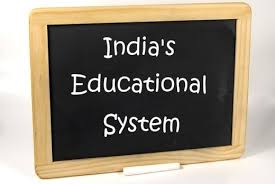Is all well with Indian Education system?
1. India got its independence from British rule in 1947 after later ruled former for more than two centuries. At the time of Indian Independence, there were only 20 odd universities to cater to a population of about 340 million.
2. Clear from the number of universities prevailing at that time and size of population, not many people in India used to go for higher education and overall Gross Enrollment Ratio (GER) in that sector was minimal.
3. By the year 2006, India had created another 300 plus universities to reach to a number of 355.
4. As of now, India has more than 750 universities to cater to a population of about 1.25 billion. It indicates that the number of universities in last 10 years has doubled from a number, which was otherwise achieved in 60 years of Indian independence.
5. GER numbers in higher education sector hover somewhere close to 20 %.
6. On numbers, it all looks very fine. But, question remains that “Is all well with Indian Education System?
7. During author’s recent visit to one of the well renowned government professional institute, it was revealed that Student : Teacher ratio was prevailing at about 38 : 1. More than 60 posts of Faculty members were vacant in that institute. This is generally the trend in most of the government institutes in the country where there are hardly any regular teachers to engage the classes.
8. Most of these institutes are dependent upon contractual staff members who are not able to put in the best of their effort owing to uncertainty involved in the tenure of their jobs.
9. In contrast to the government institutes, average age of Faculty members in a private institute is not more than 30 years. It means that these Faculty members are so young, immature and inexperienced that at times there is hardly any age gap in the student and teacher. For most of these Faculty members, teaching as a profession had never been their first choice.
10. Most of the private institutes are not very well organized paymasters as well.
11. Regulatory bodies lay down a requirement of having a minimum number of PhD faculty members in any educational institute. Private universities misuse their autonomy and award PhDs to non-deserving candidates. Later these candidates with kind of ‘bogus’ PhDs only become guides and further give rise to poor quality of PhDs.
12. This whole vicious cycle is ultimately deteriorating the quality of education in the country. No wonders, ultimate absorbers of students educated in this way i.e industry usually cry foul to not able to get enough no. of employable candidates.
13. Regulatory bodies are also not able to play their part properly owing to the limited amount of time given to them for inspecting any educational institute.
14. Following can be done to improve the quality of education and institutes in the country –
(i) Slow down the increase of number of private universities
(ii) Have a tight quality check on existing number of institutes so as to weed out the corruption completely from such a noble profession
(iii) Open up the provisions in the budget and try to fill the maximum of the vacancies first before thinking of opening up any new institutes.
(iv) Motivate the Faculty members to adopt the teaching profession with much more seriousness.
(v) Organize a large number of sessions for Faculty members / students to awaken them to the involve themselves in better quality research.

No comments:
Post a Comment